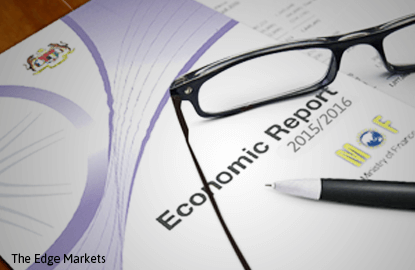
This article first appeared in The Edge Malaysia Weekly, on October 26 - November 1, 2015.
Consumer spending and private investment — the two key growth engines that drive the economy — are expected to see slower growth this year.
The government projects a 7.3% growth in private investment in 2015 and 6.7% in 2016, compared with 11% in 2014. This will come from investment activities in the services and manufacturing sectors, according to the Economic Report.

Growth in consumer spending, which makes up more than half of Malaysia’s GDP, is expected to decelerate to 6.8% in 2015, and 6.4% in 2016, compared with 7% in 2014. Between 2000 and 2014, average growth was 7.3%.
The slowdown in consumer spending in 2015 was because of the implementation of the Goods and Services Tax (GST). However, consumer spending “continues to be supported by stable income growth, manageable inflation, and lower fuel prices”, according to the Economic Report.
“In addition, the continuation and increase in Bantuan Rakyat 1Malaysia (BR1M) to targeted households and individuals as well as cash assistance to public servants during the Eid celebration, helped to boost consumer spending,” the report says.
Consumption continued to be resilient, as shown by the increase in major consumption indicators such as import of consumption goods (16.4%) and disbursement for consumption credit (2.9%) in January to August.
Next year’s consumer spending growth will be buttressed by “stable employment prospects and favourable wage growth”. “Easy access to credit, BR1M cash transfer, accommodative interest rates and benign inflation are also expected to support private consumption spending,” says the Economic Report.
Even with the tighter criteria for housing loans, household debt grew 7.9% as at end-August to account for 88.1% of GDP. This compares to 86.8% at the end of 2014.
Stricter lending guidelines on household loans saw approvals falling 10% during the first eight months of 2015, while outstanding household loans grew 8.3% to RM799.8 billion in the same period. Specifically, loans for home purchases rose the most, by 7.74%, to RM368.1 billion.
The share of outstanding loans for house purchases to total loans in the banking sector, increased marginally, from 28.1% during the first eight months of 2015, compared with 27.5% in the same period last year.
The share of household loans for other purposes, including hire purchase and consumption credit, shrank to 10.3% and 6.8%, respectively. Car financing loans rose 2.03% to RM145.6 billion, while consumption credit was up 1.15% to RM96.4 billion.
Despite the slowdown in private investment, the Malaysian Investment Development Authority’s approved investments increased to RM113.5 billion during the first half of 2015 from RM112 billion a year earlier,” said the report.
The Economic Report says RM372.7 billion worth of investments were in Entry Point Projects under the Economic Transformation Programme in the first half of 2015. It expects those investments to generate a gross national income of RM546.8 billion by 2020.
Save by subscribing to us for your print and/or digital copy.
P/S: The Edge is also available on Apple's AppStore and Androids' Google Play.